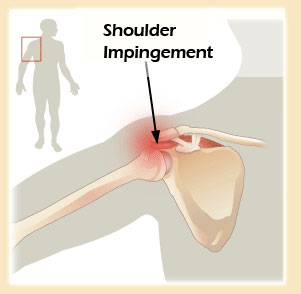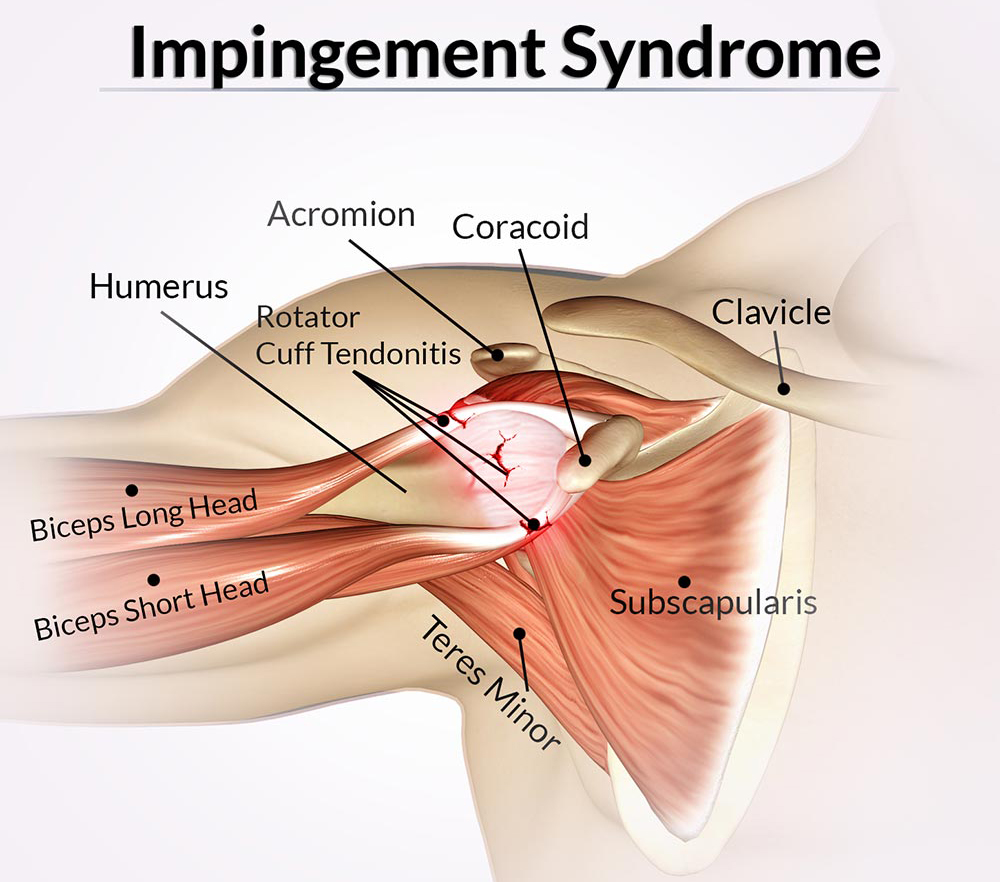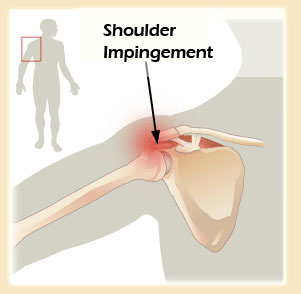
Shoulder impingement syndrome is also called as subacromial impingement, painful arc syndrome, supraspinatus syndrome, swimmer’s shoulder, and thrower’s shoulder.
It is associated with pain and some weakness when you raise your arm, and occurs when the tendons of the rotator cuff become inflamed when they pass through a narrow subacromial space.
In this syndrome, the rotator cuff tendon becomes trapped in the narrow subacromial space and repeatedly scrapes against the bone above(acromion) causing pain which becomes worse when you raise your arm over your head.
It may also be associated with persistent ache in your shoulder and pain at night.
Onset
This can start suddenly after an injury, or during middle age onwards it can come on gradually without any obvious cause.
Causes
1. Bony spurs under the acromion at the top of the subacromial space – this can narrow the space
2. swelling or thickening of the rotator cuff tendon – due to injury or inflammation
3.Bursitis- inflammation of the fluid-filled sac (bursa) that lies between the rotator cuff tendon and acromion
4. Calcific tendinitis – Calcification deposits within the rotator cuff tendon
Management Conservative
- Rest
Pain Killers – to ease the pain - Physiotherapy
After examination we will decide on referring you to a Physiotherapist to provide sessions.
Injections
A combination of Local anaesthetic and corticosteroid is injected which helps to reduce the inflammation. Further physiotherapy is recommended. Symptoms may recur.

Surgical
Surgery
After considering these above modalities and if they aren’t effective, we will discuss with you the option of surgical management which involves an operation to widen the subacromial space in your shoulder, so the rotator cuff tendon is no longer rubbing against the bone above. This is known as subacromial decompression.
It can usually be done using a technique called arthroscopy, which is a type of keyhole surgery carried out under general anaesthetic, where special surgical instruments and a thin, flexible tube containing a camera are inserted through small cuts in your skin.
The recovery is faster and with less scarring than if a larger cut was made as is routinely done in Open surgery. Most people are able to go home early .
This technique can also be used to
- remove any calcium deposits that have formed in the tendon in your shoulder
- Repair the rotator cuff tendons if injured and many more.
Dr. Vijayakumar Kunthe,
MBBS, D.Ortho, DNB (Ortho), MNAMS, MRCS (Ed) (UK), Fellow Shoulder Surgery (UK)
Specialist Orthopedic Surgeon
